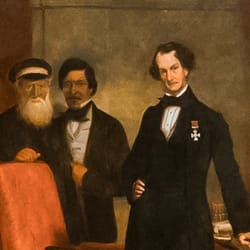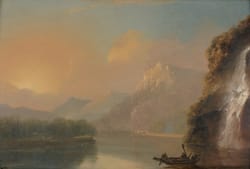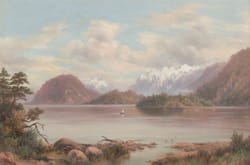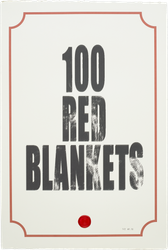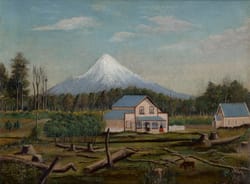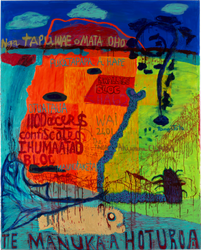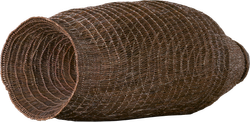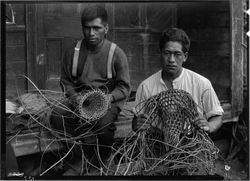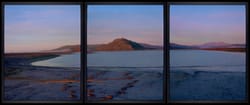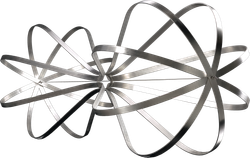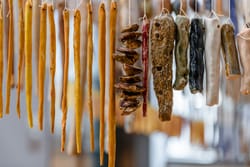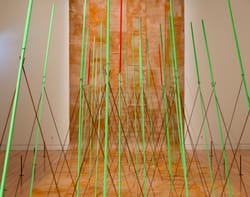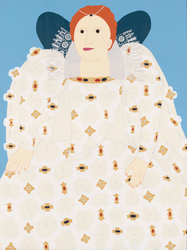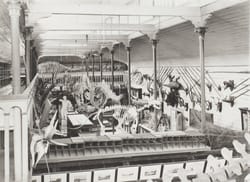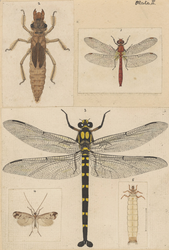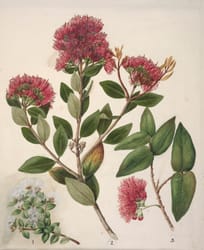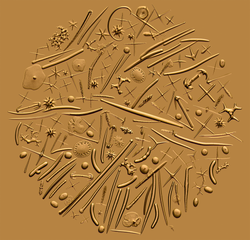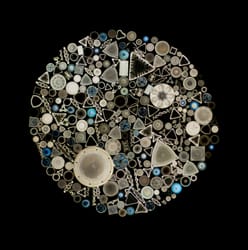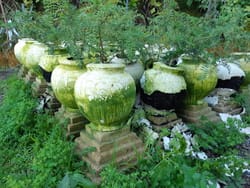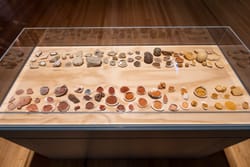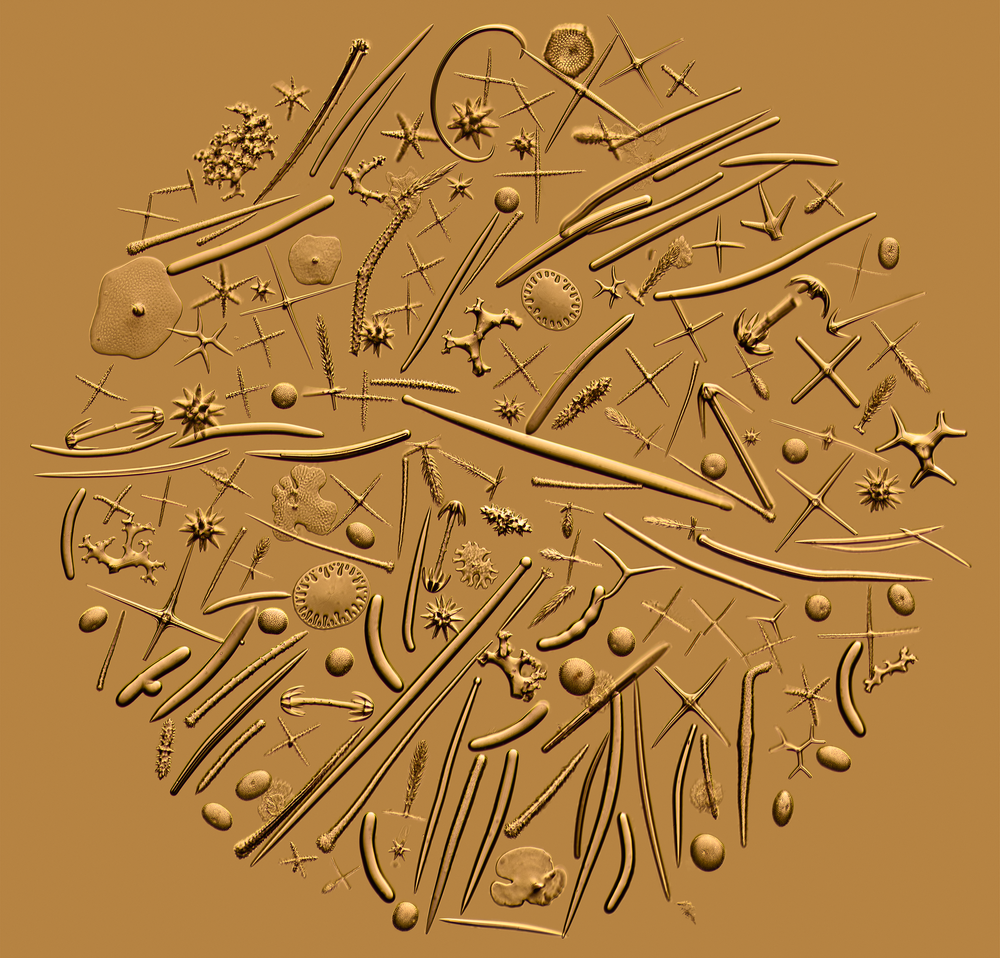
Close
WAYNE
What we’re looking at here is a photograph of little, tiny pieces of glass, they’re natural forms: little parts of the skeleton of sponges, believe it or not, which have been fossilized.
MOANA
Amazing. Oh hello again, you’ve caught me looking at spicules. This is Wayne, who's responsible for these photographs
WAYNE
Kia ora. I'm Wayne Barrar and I'm having a little walk around. It's really nice because it's been a little while since I've seen this work.
MOANA
Wayne, you were saying, these are all shards of glass?
WAYNE
There's all sorts of forms and shapes. There's one in the middle that looks a little bit like a drumstick. There's others that look like needles. There's some that look like medieval maces. Like shields, little hooks. And they're all made of silica. And they're all microscopic.
MOANA
Microscopic?!
WAYNE
They've been fossilized in the bottom of the sea. And at some point they've been extracted by somebody to make a glass slide, which I've actually viewed and photographed through the microscope.
MOANA
How was this image created?
WAYNE
It was created by taking a number of photographs through the microscope across the view with a digital camera, and then they are stitched together to make the photograph a little sharper rather than just taking one single image.
And I've used a type of lighting, what we call oblique lighting, which sort of hits these little clear objects from an angle, and it makes them look quite three-dimensional, like they've been sculpted.
MOANA
And what about these two works on the next wall? These triptychs? They look like something from outer space.
WAYNE
Now, in these two works here, I've made them very wide, so they're almost panoramic.
They do allude to almost celestial views of outer space. One of the things that I find really interesting about microscopy is there's a very fine line between what you see in a microscope and what you see in a telescope, yet one is incredibly small and one is incredibly big. But the way the optics work, they make … sometimes make images for us that look very similar.
MOANA
What's this big donut shape?
WAYNE
Well, the large donut is, the material that the person who's made this slide for showing the diatoms … they put a little ring, almost like a pencil mark around it to say, ‘the interesting stuff is inside here’.
And, normally a scientist would keep that well out of any photographs, they'd never be interested in it. But an artist, of course, is. It's just as interesting as anything else.
For me, what this project has been about is not only the science and the biology of the diatoms and the cultural histories, but also the whole idea of looking at what we look at, and when we look at something, it becomes interesting.
MOANA
So what actually is a diatom?
WAYNE
Yeah. That's a good question. On the main long wall on the left hand side, there is a square image in a frame that shows a group of diatoms in a pattern, on a black background.
These are all different species of fossilized algae, and they've been picked out by the person who's made this slide by using like a cat's whisker or sometimes a rat's whisker, believe it or not.
I mean, think about how long it would've taken to have picked them out and placed them like this, the effort and the almost fanatical nature of creating this, microscopic artifact, that fascinates me.
MOANA
Thanks Wayne great talking to you!
WAYNE
And thank you. It's been really nice having a look at the work again.
MOANA
Carry on to the far end of this wall, we need to find out more about these diatoms.
